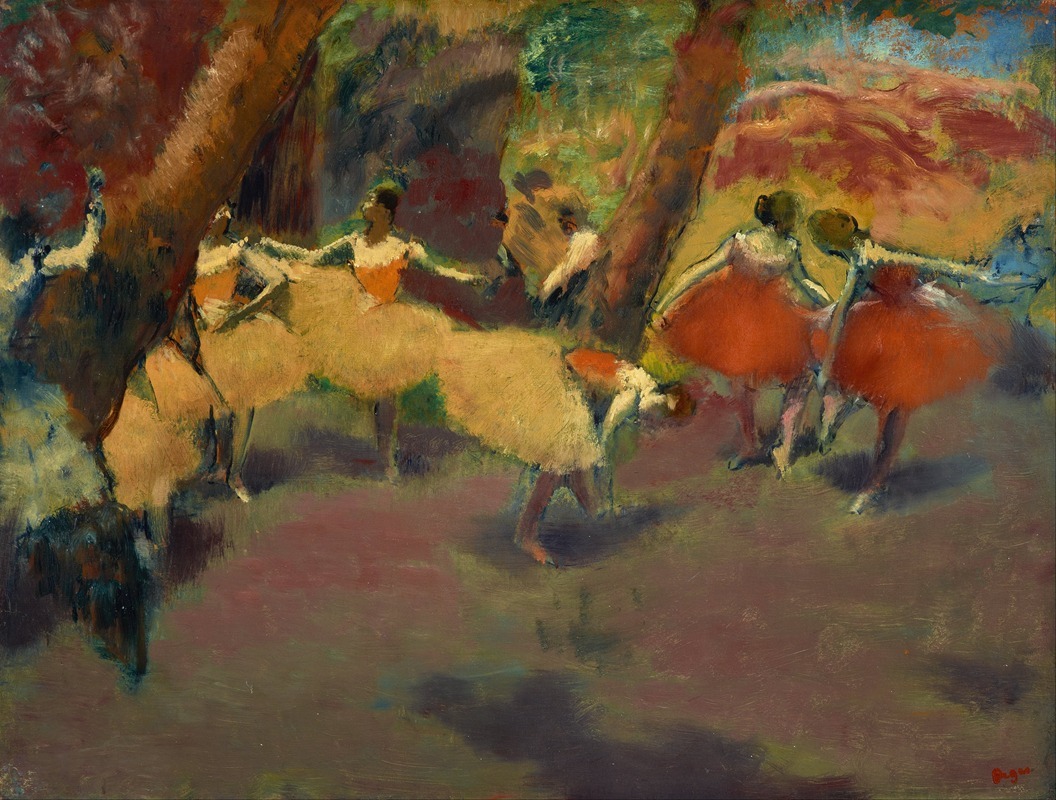
Before The Performance
A hand-painted replica of Edgar Degas’s masterpiece Before The Performance, meticulously crafted by professional artists to capture the true essence of the original. Each piece is created with museum-quality canvas and rare mineral pigments, carefully painted by experienced artists with delicate brushstrokes and rich, layered colors to perfectly recreate the texture of the original artwork. Unlike machine-printed reproductions, this hand-painted version brings the painting to life, infused with the artist’s emotions and skill in every stroke. Whether for personal collection or home decoration, it instantly elevates the artistic atmosphere of any space.
Edgar Degas, a prominent French artist associated with the Impressionist movement, is renowned for his depictions of dancers and the ballet. One of his notable works, "Before the Performance," captures the essence of his fascination with the world of dance. Although specific details about this particular painting are limited, Degas's broader body of work provides context for understanding his approach and style.
Degas was born on July 19, 1834, in Paris, France, and he spent much of his life in the city, which was a hub of artistic innovation during the 19th century. He initially trained in traditional academic art, studying at the École des Beaux-Arts and copying works in the Louvre. However, his style evolved as he became involved with the Impressionists, a group of artists who sought to capture modern life and the effects of light and movement.
Throughout his career, Degas was captivated by the ballet, and he produced numerous paintings, pastels, and sculptures of dancers. His works often depict the behind-the-scenes world of the ballet, showing dancers rehearsing, preparing, or resting. This focus on the everyday aspects of a dancer's life was somewhat unconventional at the time, as many artists preferred to depict more formal and idealized scenes.
"Before the Performance" fits within this context, as it likely portrays dancers in a moment of preparation or anticipation before taking the stage. Degas's interest in such moments reflects his desire to capture the reality of the dancers' experiences, rather than just their performances. His works often emphasize the physicality and discipline required of dancers, highlighting their strength and grace.
Degas's technique was also innovative. He frequently used pastels, which allowed him to create soft, layered textures and vibrant colors. This medium was particularly suited to capturing the delicate fabrics and subtle lighting of the ballet. Additionally, Degas was known for his unusual compositions, often cropping figures in unexpected ways or using asymmetrical arrangements. These choices contribute to the dynamic and intimate quality of his works.
In "Before the Performance," as in many of his other paintings, Degas likely employed these techniques to convey a sense of immediacy and movement. His ability to depict the nuances of light and shadow, combined with his keen observation of human gesture, results in a vivid portrayal of the dancers' world.
Degas's work has had a lasting impact on the art world, influencing subsequent generations of artists. His focus on contemporary life and his innovative use of materials and composition helped to redefine the possibilities of modern art. Today, Degas is celebrated as one of the leading figures of the Impressionist movement, and his paintings of dancers remain some of his most beloved and recognizable works.
While specific information about "Before the Performance" is limited, the painting is emblematic of Degas's broader artistic interests and achievements. Through his depictions of dancers, Degas offered viewers a glimpse into a world of beauty, discipline, and artistry, capturing the essence of the ballet in a way that continues to resonate with audiences today.


















